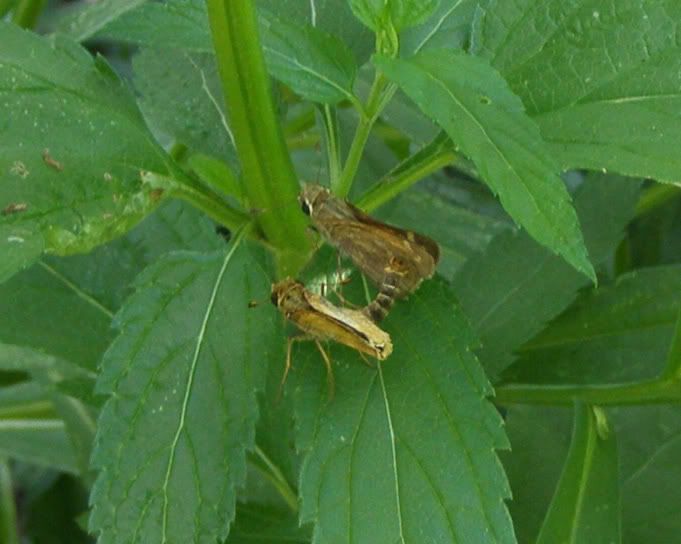
One morning earlier this week I went into the garden. The skippers darting around had caught my eye as they've become more common. On a leaf I witness one land next to the other and do what can only be described as a butterfly reach around. The two take off still connected to one another.
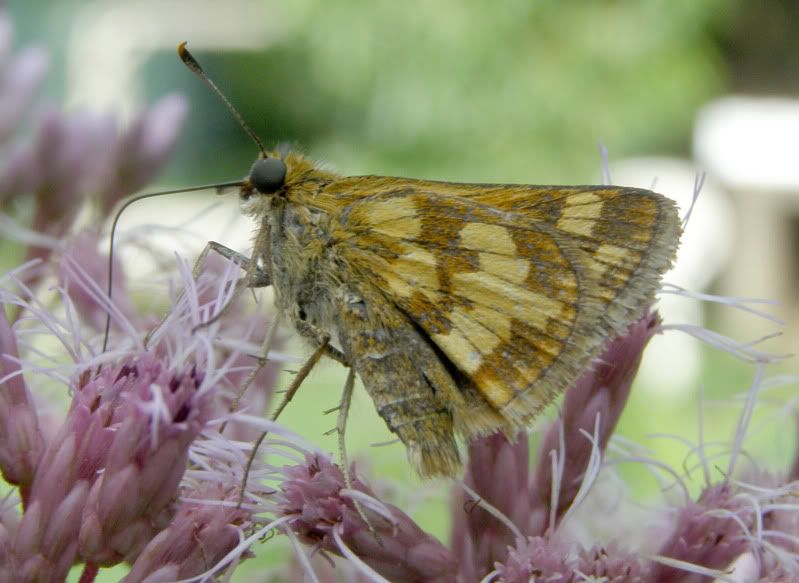
More Skippers are on the Joe Pye Weed behind me. Never more than 2 or 3 though including the mating pair. But I see different color patterns now and know there have to be more of them out there. Pictured above is one of the more colorful ones but I've seen some that were bright orange.
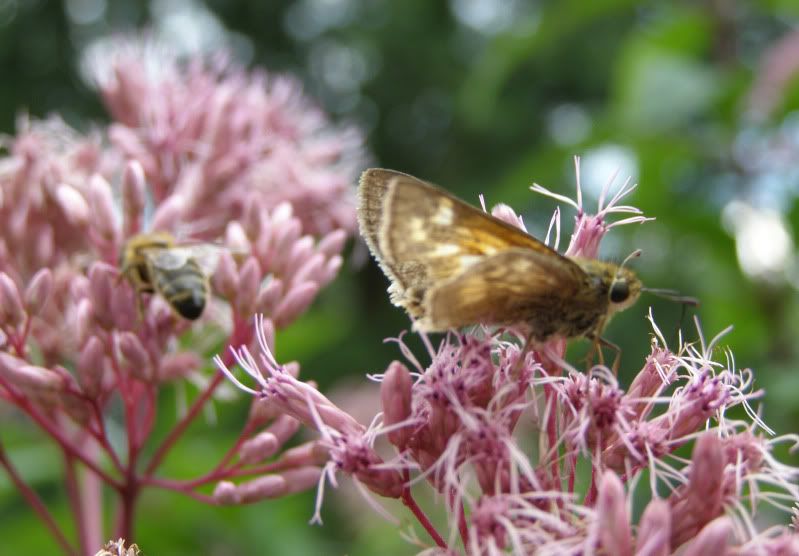
Along with the skippers are bees. Though I haven't truly captured it to do them justice, I can find dozens of bees working each cluster of flowers at a time. Easily there are several hundred bees on the plant during certain parts of the day.
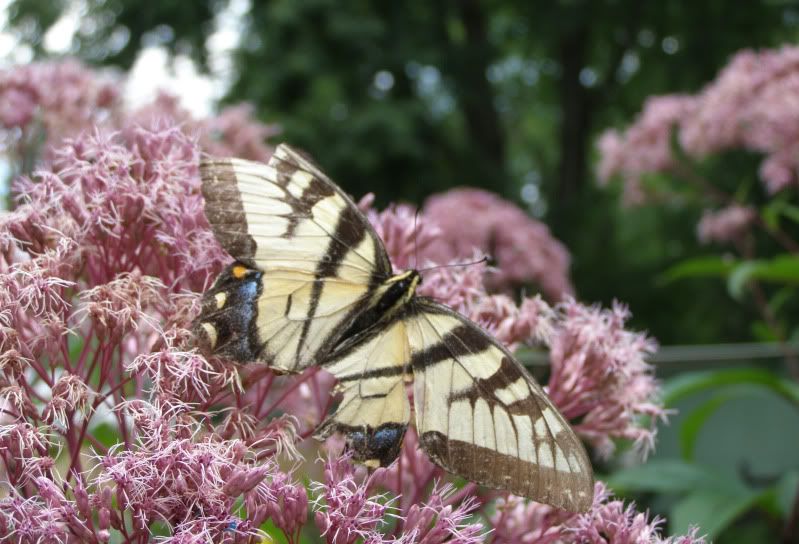
Swallowtails occasionally stop by too. This one though seems to have gotten into a fight with a bird. They're almost never out there but on days when I have one in the yard they usually spend several hours on this plant.
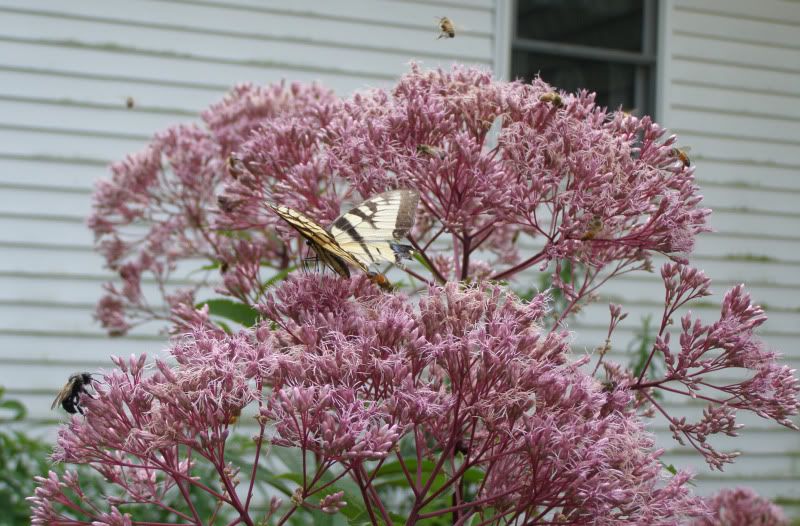
It's sights like that that remind me why I bought it. I wish I could say the plant wasn't falling over though. Only a few stems in the middle are staying up right. What's neat though now that I think of it, is I wonder if falling over isn't beneficial to the plant. Though native I have to say it was not drought tolerant. Often I'd come out and find some of the stems folded over in a floppy mess. I'd give it a good deep soaking and it would be right again but only for another day or so. Now that it's blooming perhaps it's easier to produce nectar when the flowers face outward.
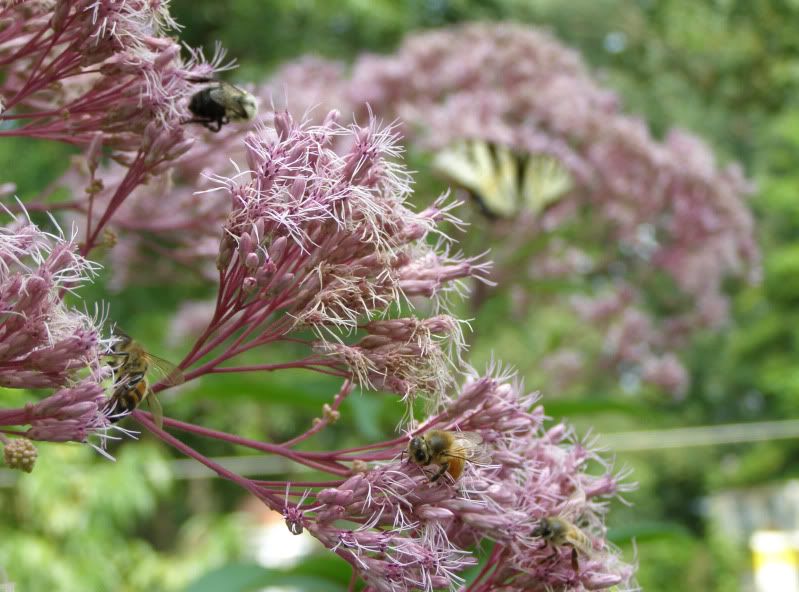
As the butterflies come and go the real treat is watching all the bees.
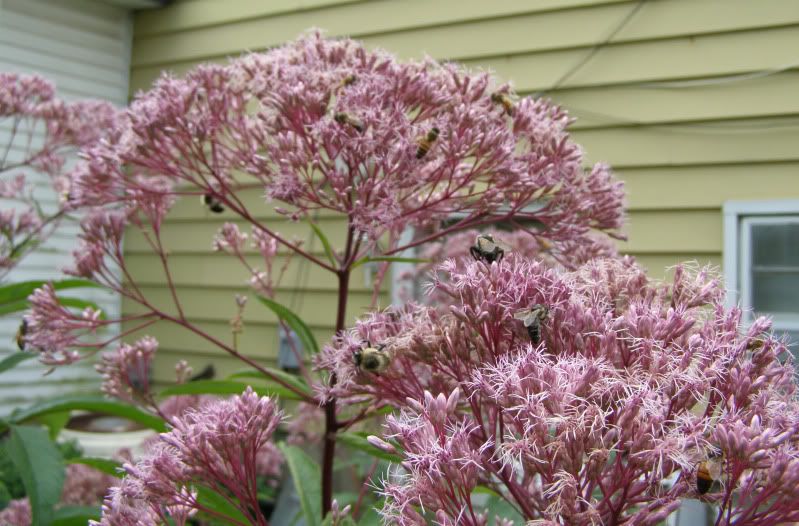
This was the best I could get so far of the numbers of bees working this plant. However I can say I've seen even more bees on it, and you're only looking at a small fraction of the flowers. (please excuse the different color siding to my house in the background.)

With great diversity of pollinators I can survey how the local populations of bees are doing. Needless to say Honey bees are on the up. Bumblebees I didn't think were doing good at all until this plant started blooming. Usually I'd be out wondering why I had nothing but bumblebees in the garden all spring and summer and only when the richer sources came in would I start seeing honey bees. Bumblebees actually increase in size over the year, with the smallest bees being born earlier in the year, and larger bees (the same size as the queen) are born later. I'm not sure what this image portrays above but having such small bees this late in the year can't be good.